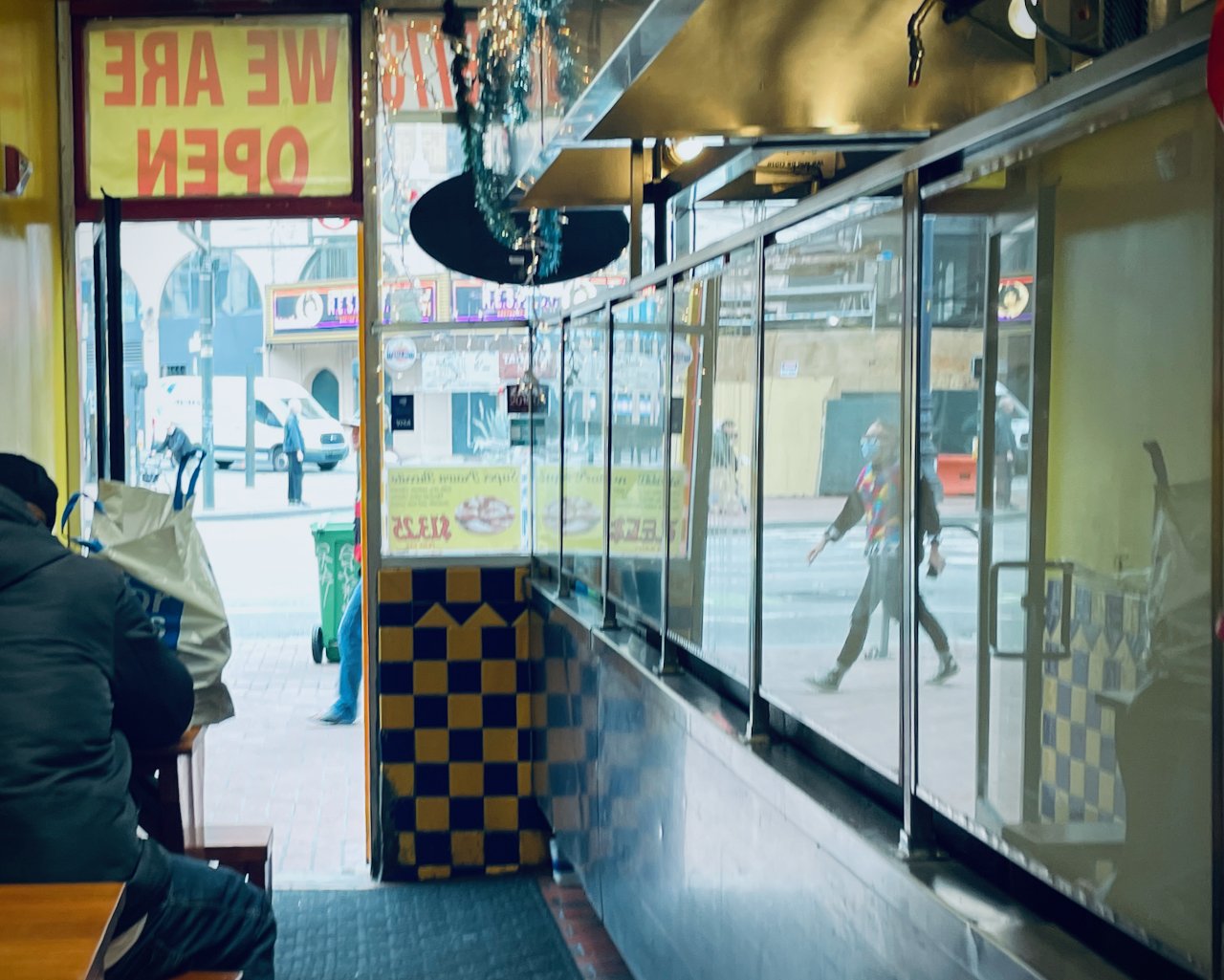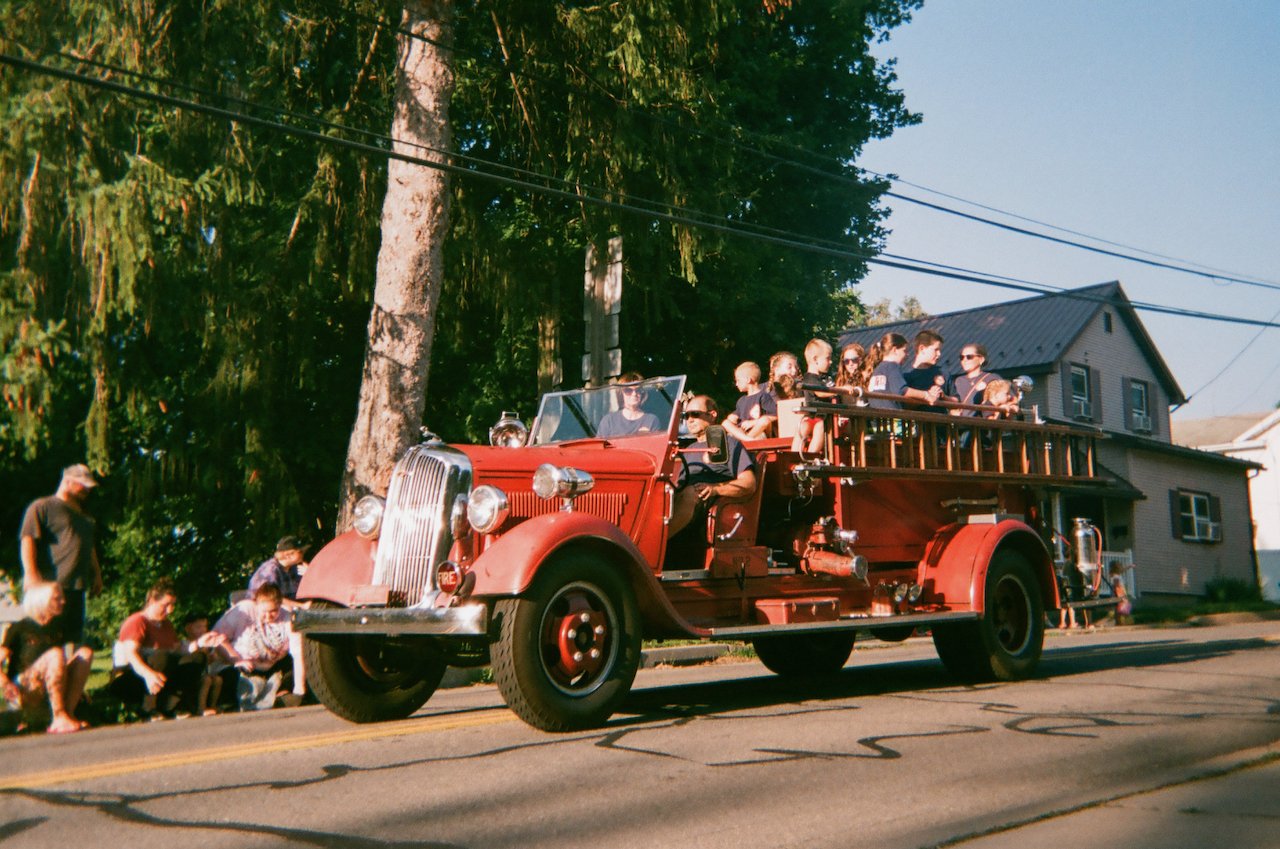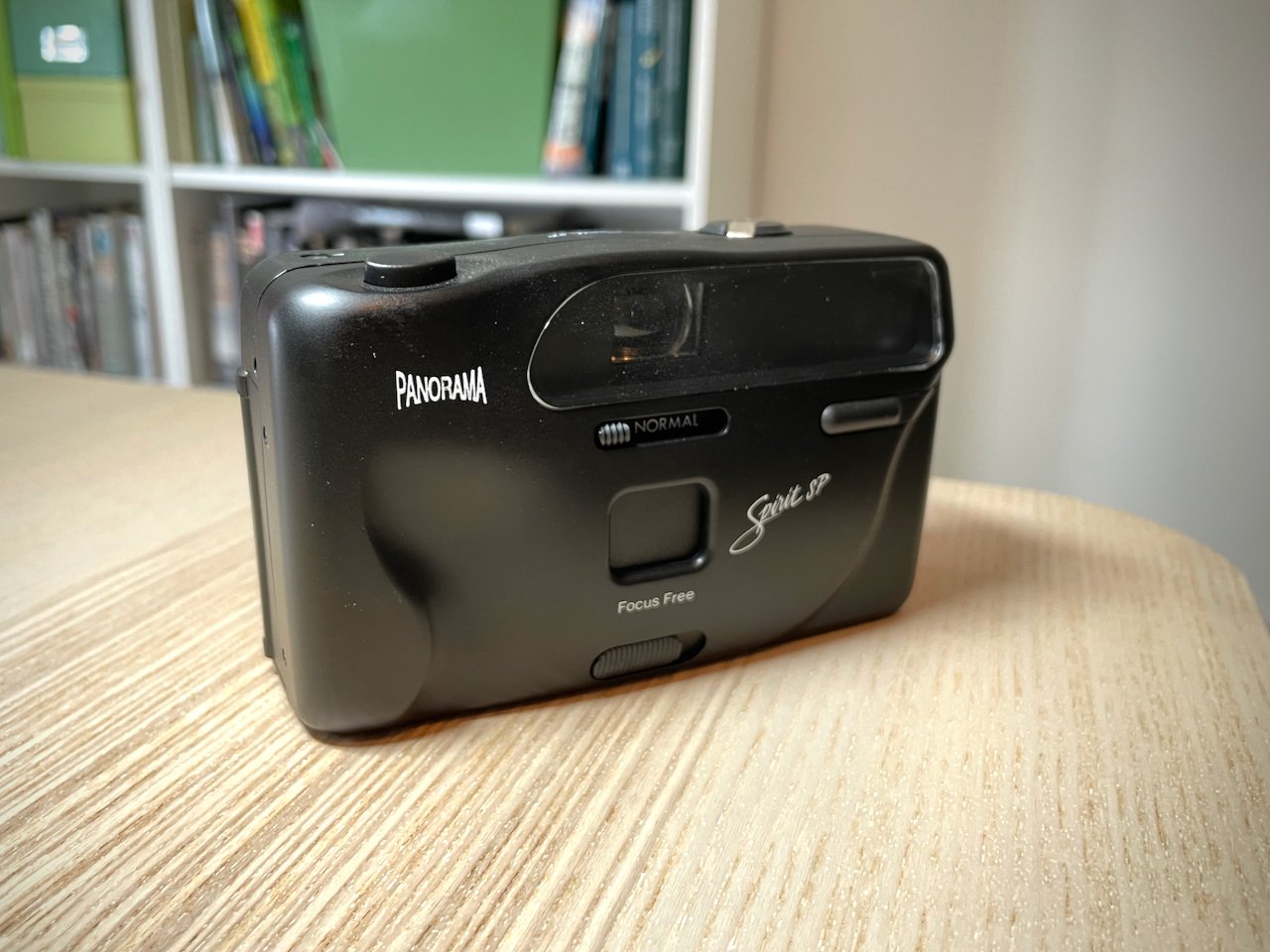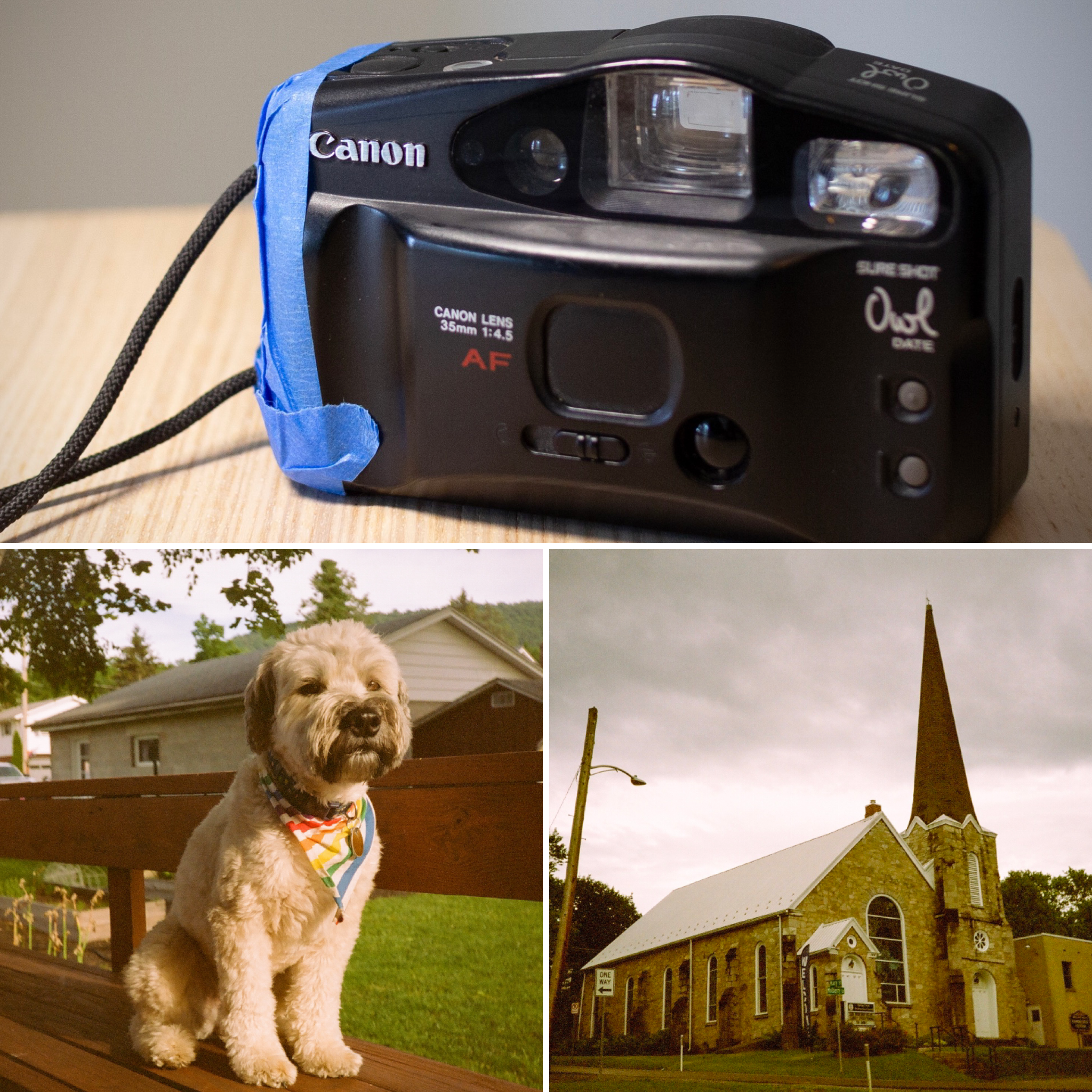This next set of photos were all taken with this camera—a Kalimar Spirit SP. I know nothing about this camera in every sense—I found it while digging through my old room looking for a different film camera, and there this was, in the plastic bag it apparently came in, and seemingly never used.
What I do know of the model I found while poking online, and even then, there's not much to know (or at least, that I'd enjoy getting into). It's a black plastic box to take pictures, with an output probably comparable to what you'd get out of a disposable film camera.
While I wouldn't use it all the time, I did really enjoy what I got out of this one. I feel like a bit of a bandwagoner to say this, but I'm drawn to the imperfections in its photos—vignetting, mediocre sharpness, underexposure[^1]—these remind me of some of the film photographs that were taken in my childhood, and something feels very anchoring in that sense.
Its photos are anchored by these characteristics to similar images of a past era. Its photos are also, in that way common to all film photographs, materially anchored to specific places and times, created by the light of a moment affecting the film material in the camera.
[^1]: And underexposure in this case is caused by operator error, my choosing to take a shot in non-ideal conditions—this camera does no adjustments for exposure whatsoever.
































